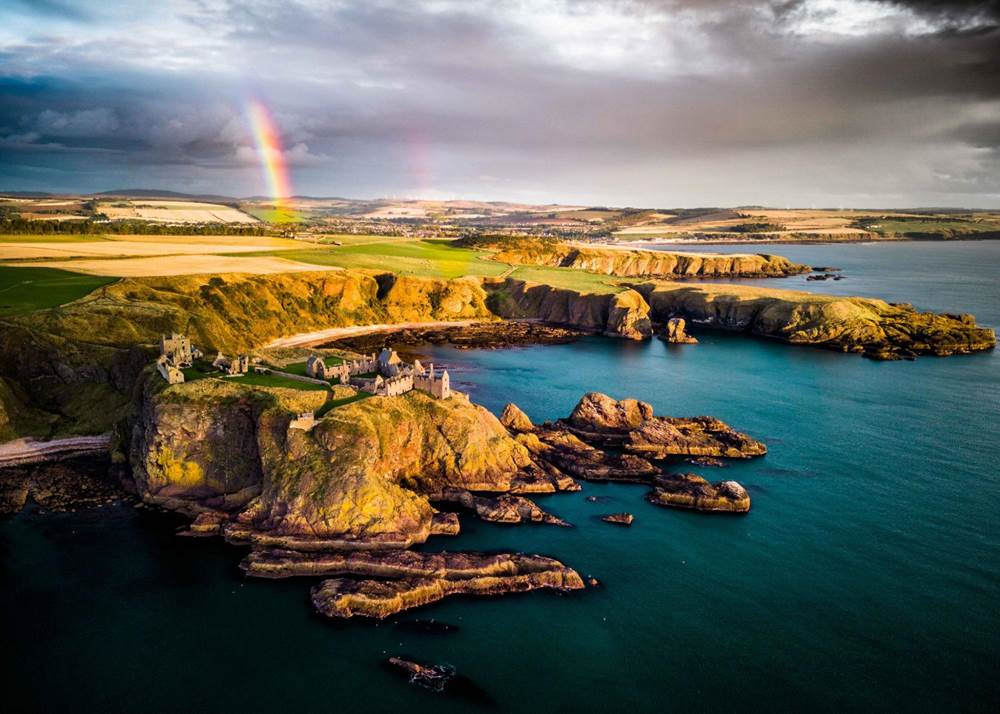
Dunnottar Castle
Renowned for its incredible landscape, the North East of Scotland is filled with natural beauty, from rolling hills and wide stretches of magnificent coastline to quaint harbour towns and gleaming lochs.
Capturing the true essence of life in this unique part of Scotland, ASPC invited photographers across the local region to submit their best photographs of the local area. After careful consideration, 12 talented photographers were selected, with each winner set to receive a thoughtful gift alongside the opportunity to be featured on our website homepage for one month.
This month’s majestic scene was submitted by Glen Cairns. I think this may be a photo taken shortly after sunrise, judging by the length and direction of shadows. The quality of the light and the brilliant clarity of the detail suggests a fresh morning, a view given credence, perhaps, by the presence of the double rainbow and the cloud cover.
Looking at the grain fields it looks like the hairst is well on, although not all fields in the distance seem to have been cut.
Dunnottar Castle is justly renowned and attracts visitors from around the world. Part of its fame is due to the location having been used in several films. Looking at the rugged cliffs and seascape, and the peninsular location of the impressive, ruined castle, it is not difficult to understand why this place captures folks’ imagination.
Glen has not only captured that element, but his skill has enhanced the feeling of ancient history steeped in the place. It is easy to imagine the events that have taken place through the ages.
Move inland from Dunnottar and you are on the periphery of the Mearns – Grassick Gibbon country. James Leslie Mitchell was the man behind the pseudonym. Born in Auchterless in 1901, he died, after an operation for a perforated gastric ulcer, in Welwyn Garden City in 1935. He is most famous for his trilogy - A Scots Quair - books set in the Mearns and regarded as a masterpiece, world-wide. If you have yet to read these, do so, I suggest. They are wonderful.
We thought this terrific photograph truly captured the rugged nature of the coast, the impregnability of the castle, and the relationship between coast and farmland.
Looking to find out more about our 2023 photography competition? Browse our incredible range of past submissions by heading to our website. Click here to see our previous month's winner.

